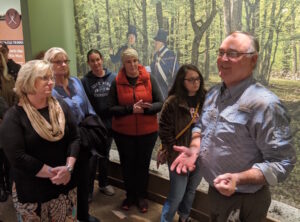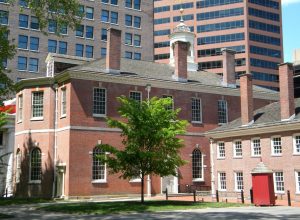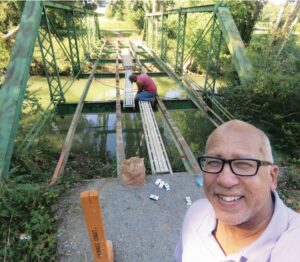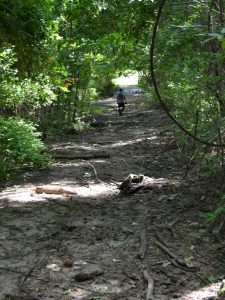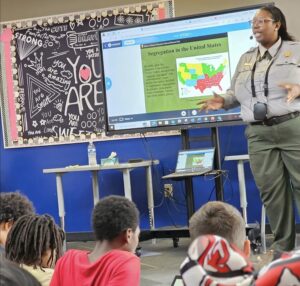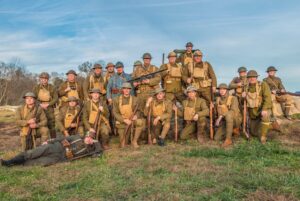Thursday, Oct. 16: Sequoyah and (separate presentation) Newly Discovered Newspaper Accounts from the Trail of Tears
First, Charlie Rhodarmer of the Sequoyah Birthplace Museum will do a presentation that focuses on what we KNOW about Sequoyah, and what we DON’T KNOW about him. (It turns out that much of what we “know” about Sequoyah is a combination of oral history and conjecture — which is ironic, since the mean invented a written language!) However, Sequoyah’s significance in American and Tennessee history has never been questioned.
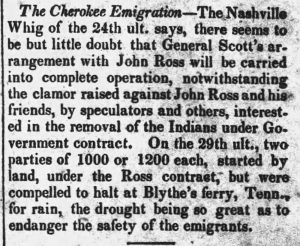
As this article in the Aug. 17, 1838, Nashville Union, proves, there were Cherokee children dying before the migration began
Afterwards, “History Bill” will reveal (and distribute) accounts that were published in Tennessee newspapers in 1838 about the Trail of Tears — most of which had never been discovered before now. The articles reveal three things: 1) Even in 1838, the newspapers had sympathy on the Cherokee. 2) Many of the migrating Cherokee didn’t have enough clothes to survive the winter that was coming. 3) The drought made the situation worse.
Click here to register for Oct. 16.
Thursday, Oct. 23: Tennessee’s Bloody Road to Statehood: Kings Mountain, State of Franklin, Southwest Territory and Nickajack
4th, 5th and 8th grade teachers have to explain to their students how Tennessee became a state — and era that has been made BORING by generations of official textbooks. In this hour and a half inservice, “History Bill” will tell it in fascinating terms, going from the Revolutionary War through the “Lost State of Franklin” through the Southwest Territory and explain how Tennessee became a state in 1796.
Along the way, he will talk about the Battle of King’s Mountain, why on EARTH George Washington picked William Blount to be governor of the Southwest Territory, the Nickajack Expedition (and what led to it), the 1795 census, and the significance of the score 42-30.
Click here to register for Oct. 23.
Thursday, Oct. 30: The Fascinating History of Tennessee’s Roads and Bridges
First, Chattanooga news anchor and columnist Calvin Sneed is crazy about bridges. He’s taken more photos and done more research on Tennessee’s bridges than anyone alive! In this presentation, Sneed will tell teachers why teaching students about bridges will open their eyes to history and a new view of the world. He will also talk about TOLL bridges — Tennessee used to have 17 of them — where they were, how much it cost to use them, how quickly they paid for themselves, and why we don’t have them anymore.
Part Two: When Tennesseans first migrated west, they migrated on a “road” that would look more to us like a muddy trail. These early roads determined where all the early towns were. Starting about 1840, railroads took over, and caused us to abandon many of these original towns. Then, around 1920, better, paved roads caused us to abandon many of the towns that we built for the railroads. Then, around 1960, interstate highways caused us to move away from many of the towns that had grown around those improved roads. This is a fascinating picture of how roads, paved roads and interstates determine where almost all of us live today.
Click here to register for October 30.
Tuesday, Nov. 4: Brown v Board and How It Changed Tennessee
First Hour: Fatimah Purvis of the Brown v Board of Education National Historic Site tells the “back story” of the Topeka, Kansas, case which changed everything about education in the South. She will focus on the aspects of the case that most people don’t know. For example, who was Brown? Why was the lawsuit filed in the first place? How did the conditions of “whites only” public schools and “blacks only” public schools compare? What role did “doll tests” play in the Supreme Court decision? And why is there a section of Topeka called “Tennessee Town?”

High school senior Bobby Cain walks into Clinton High School in August 1956 (Library of Congress photo)
Second Hour: Brown v. Board would eventually cause all public schools in Tennessee to integrate. But it happened in phases — year-by-year, and in some cases grade-by-grade. In this presentation, “History Bill” will show newspaper articles that prove that most parts of the South were more defiant than Tennessee was. He will also explain why Oak Ridge High School was the first to integrate in 1955; then Clinton High School in 1956; then (in most parts of Tennessee) grade-by-grade, under what was known as the “Nashville Plan.” He will also show articles that linked the creation of many new private schools to the backlash against busing in 1971.
Click here to register for November 4.
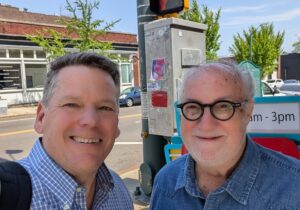
History Billy and WIlly Bearden were friendly a few months ago in Memphis, but they won’t on friendly terms come November 11!
Tuesday, Nov. 11: Filmmaker and Memphis Tour Guide Willy Bearden versus History Bill on “Memphis vs. Nashville: Which Has the Best History?”
In this 2-hour inservice, “Willy and Billy” go head-to-head in an argument/debate, each making a case for which of their home cities has the most interesting history. Which food is better; Memphis barbeque or Nashville Hot Chicken? Who is better: Elvis and B.B. King, or Garth Brooks and Minnie Pearl? Which team is better: The Grizzlies or the Titans? Which river is better: the Mississippi or the Cumberland? Which companies are better: Piggly Wiggly and FedEx, or the National Life & Accident Insurance Company and HCA? Which old house is better: Graceland or the Hermitage? Which stretch of road is better: Beale Street or Lower Broad?
Click here to register for the NO HOLDS BARRED match on November 11 between “Willy and Billy.”
Tuesday, Nov. 18: World War I in Tennessee and Tennessee between 1910 and 1925
First Hour: World War I destroyed European empires and fostered the environment that led to the second World War and Cold War. Its battles killed and maimed millions and scarred a generation of soldiers and civilians. Tanner Wells, park ranger at Alvin York State Historic Park, talks about some of the most fascinating Tennessee connections to the Great War – from Alvin York to Admiral Gleaves to the the half-dozen Tennessee soldiers who nearly kidnapped the Kaiser of Germany.
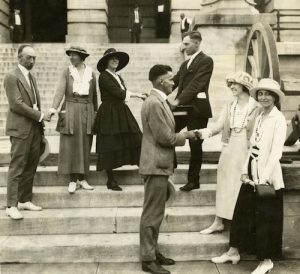
Suffrage leaders thank and congratulate Harry Burn (in the front) for his vote on the suffrage amendment.
Second hour: A lot other than World War I happened between 1910 and 1920. Hydroelectric dams started being built all over East Tennessee. The KKK became prominent in Middle Tennessee. The influenza epidemic killed tens of thousands of people all over the state and changed medical education forever. The 19th Amendment — passed in Tennessee — granted the right to vote to all women. The battle over turning the Great Smoky Mountains into a national park was fought and won. There was this thing called the Scopes Trial, in Rhea County. A blind Nashville man became the first human to use a seeing-eye dog. “History Bill” Carey fills us in on all the details.
Click here to register for November 18.
